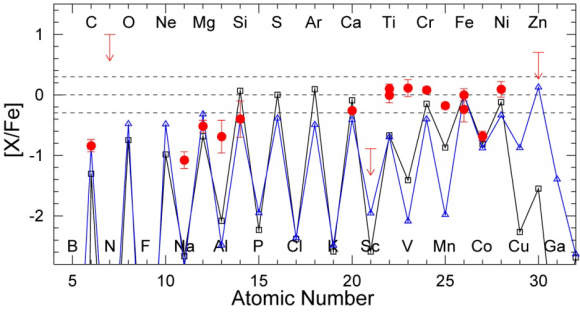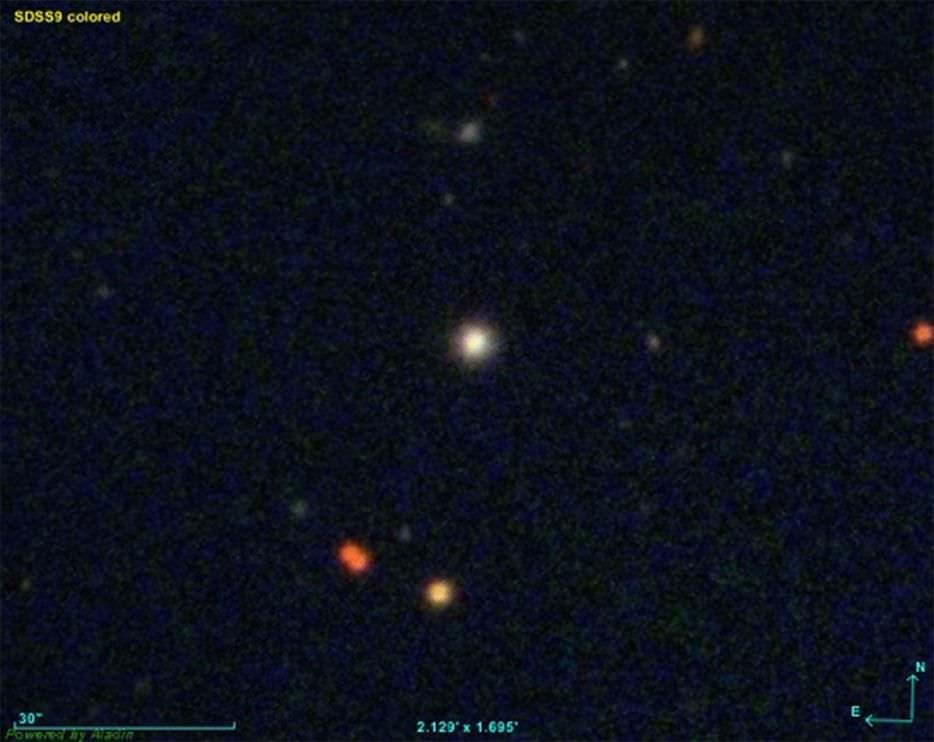The young universe was composed of a pristine mix of hydrogen, helium, and a tiny trace of lithium. But after hundreds of millions of years, it began to cool and giant clouds of the primordial elements collapsed to form the first stars.
The first “Population III” stars were extremely massive and bright, synthesizing the first batches of heavy elements, and erupting as supernovae after relatively short lifetimes of just a few million years. This cycle of star birth and death has steadily produced and dispersed more heavy elements throughout cosmic history.
Astronomers haven’t spotted any of the first stars still shining today. But now, a team using the 8.2-meter Subaru Telescope has discovered an ancient low-mass star that likely formed from the elements produced in the supernova explosion of a very massive first generation star.
Pop III stars with masses exceeding 100 times that of the Sun would have died in a peculiar explosion that theorists call a pair-instability supernova.
Like its lower-energy comrade, a pair-instability supernova occurs when a massive star no longer produces enough energy to counteract the inward pull of gravity. But with so much mass, the star’s core is squeezed to such a high temperature and pressure that runaway nuclear reactions power a devastating explosion. The whole star is obliterated and no compact remnant, such as a black hole or neutron star, is left behind.
Astronomers have seen hints of these rare events before. But now, Wako Aoiki from the National Astronomical Observatory of Japan and colleagues have approached the search in a different way, by finding a star that bears the chemical fingerprints of these ancient explosions.
The elements we see lacing a star’s surface provide a key to understanding the supernova that preceded the star’s birth. And the star, dubbed SDSS001820.5-093939.2, exhibits a peculiar set of chemical abundance ratios. It has high levels of heavy elements, such as nickel, calcium, and iron, but low levels of light elements, such as carbon, magnesium and cobalt.
Note that the star is still metal poor in the grand scheme of things. Its iron abundance is 1/100 of the solar level. But compared with most metal-poor stars, where the iron abundance can be 1/100,000 or less of the solar level, the star is metal rich.

These odd fingerprints suggest the star formed from material seeded by the death of a very massive Pop III star. In fact, the chemical composition of the star matches the elements that pair-instability supernovae are predicted to create.
The team notes that this is the only star of about 500 in the same low-metallicity range that has this peculiar makeup. It is — at the moment — our only window into the early universe and the first generation of stars.
The paper was published Aug. 22 in Science and is available online.


Are they sure they didn’t accidently added traces of vulcanic fumes to their numbers?
There are ways to correct for that. Point the spectrograph at an empty bit of sky to see what it sees. This will include contributions from our atmosphere and its contents. Then when you point the spectrograph at a star, you can subtract off this foreground contamination.
another way is to point a space telescope equipped with a spectrograph at it 😉
Another example of a hypothesis on top of another hypothesis. What irks me is that the first hypothesis (Pop III stars) is presented as fact in this article.
Good point Ignoramus,
Population III stars are after the fact fixes used to explain why there are so many “metals” observed in very young galaxies with high red shifts. The only way for these “metals” (nitrogen and oxygen and carbon are “metals” for astronomers) to exist is for a star to completely evolve, and then blow up, producing “metals” in the process. It takes billions of years for a star to evolve to this point, and this duration would be longer than the observed cosmological location in time.
So the after the fact fix is to assume that there must have been extremely large stars that formed when the universe first began, These stars would be 100s of times more massive than typical stars formed today, thereby allowing a much faster evolution.
How ever if gravity were more powerful in the past, as believed by Dirac and Gamow, stars would evolve much more quickly in the past.
Google Multidimensional Geometric Expansion of Spacetime if interested
Some are even better than the Greeks in creating mythology.